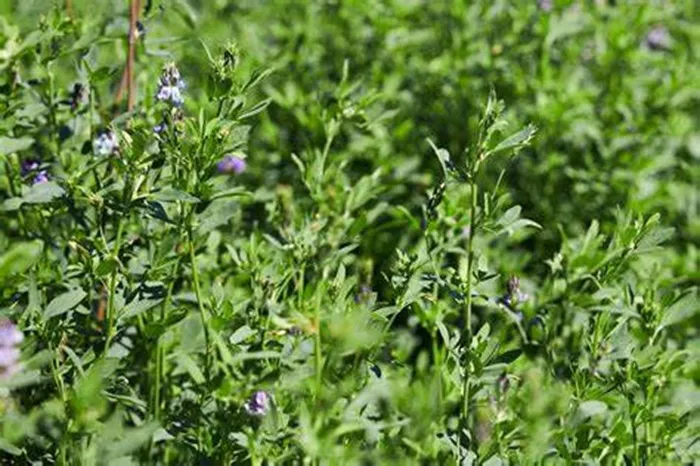Alfalfa, renowned for its high protein yield, surpasses all other crops in protein production per acre without the need for nitrogen fertilizers. According to industry expert Putnam, alfalfa can yield between 2,500 and 3,500 gallons of milk per acre, particularly in the Southwest. Despite its significant role in dairy and cattle industries, researchers are exploring new avenues for alfalfa by investigating its potential for human consumption.
The focus is now shifting towards extracting alfalfa protein for human use. While this research remains in the experimental phase, the potential of alfalfa is considerable due to its high protein content. Alfalfa leaf protein boasts many functional properties required for human consumption. However, it faces a significant challenge: it primarily exists as rubisco, an enzyme that rapidly degrades after harvest.
In contrast, protein in seed-producing crops is encapsulated within seeds, making it easier to store and transport post-fractionation. Leaf protein, on the other hand, breaks down quickly into amino acids through proteolysis, complicating its use.
To address this issue, USDA-ARS research biologist Christina Arther is developing a new method to more effectively screen alfalfa samples for their potential as a protein source. This method employs a higher-throughput fluorescence intensity-based protease activity assay designed for aboveground plant tissue.
“We aimed to improve both accuracy and throughput, which has been a bottleneck,” Arther explains. “We use a commercially available protein substrate bound to a fluorescent molecule. As proteases in the plant sample break down the protein, the fluorescent molecule is released, increasing fluorescence which can be measured.”
Higher fluorescence indicates more active proteases and less potential for successful protein extraction. Identifying varieties with lower protease activity could lead to more viable options for protein extraction.
“If we can find varieties with significantly lower protease activity, we might use those in breeding programs to enhance alfalfa for human consumption,” Arther notes.
Expanding alfalfa’s use beyond traditional forage and livestock feed could significantly boost its economic value and spur innovation in breeding programs. Putnam suggests that while alfalfa currently best serves dairy production, future advancements will explore its broader applications. Alfalfa contains about 20 to 24% protein, and with modified agronomic methods, this could increase to 28 or 30%.
“To address future food demands and crop production efficiency, exploring options like these is essential,” Putnam emphasizes.
As the seed industry seeks to offer sustainable and environmentally responsible solutions, university research plays a crucial role in developing improved seeds, introducing sustainable practices, and expanding market opportunities for alfalfa.
“It’s a remarkable crop with tremendous potential. Maintaining its role is vital,” Brummer asserts. “While progress is being made, alfalfa still lags behind major crops in terms of innovation. We need more research and development in this area.”
[inline_related_posts title=”You Might Be Interested In” title_align=”left” style=”list” number=”6″ align=”none” ids=”12220,12216,11297″ by=”categories” orderby=”rand” order=”DESC” hide_thumb=”no” thumb_right=”no” views=”no” date=”yes” grid_columns=”2″ post_type=”” tax=””]



































